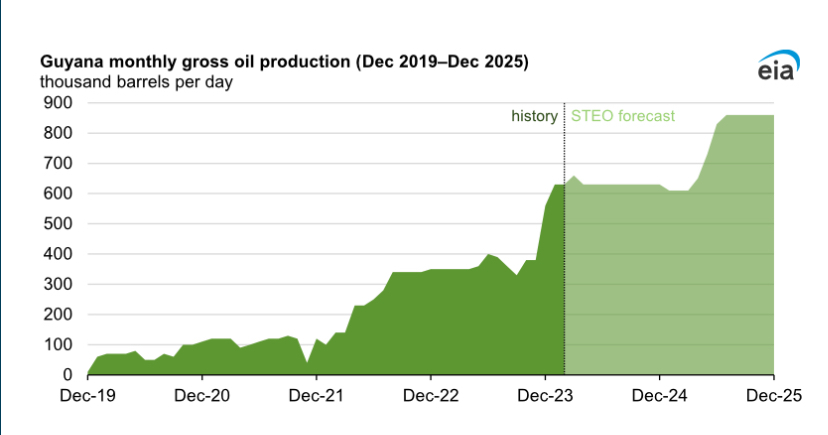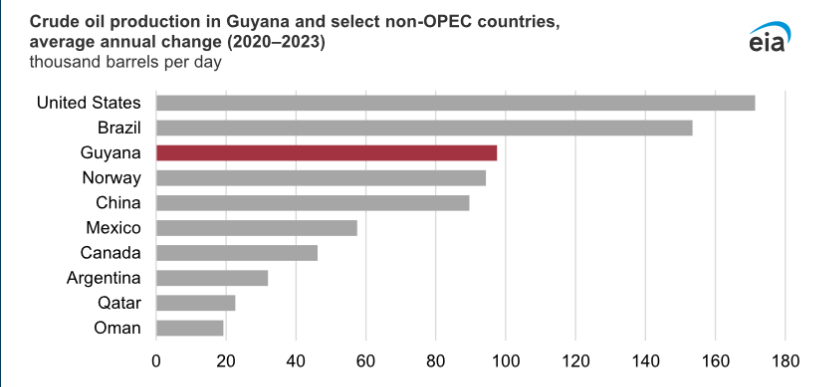Since commencing oil production in 2019, Guyana’s output has skyrocketed to approximately 645,000 barrels per day (b/d) as of early 2024, all sourced from the prolific Stabroek block. This rapid increase in production has positioned Guyana as a pivotal player in the global crude oil supply chain, as recently highlighted in a report by the U.S. Energy Information Administration (EIA).
The report noted that Guyana’s crude oil production surged by an annual average of 98,000 b/d from 2020 to 2023. This impressive growth rate ranks Guyana as the third-fastest growing non-OPEC oil-producing country during this period.
Furthermore, it cited the International Monetary Fund (IMF) noting that the country’s burgeoning oil sector has been a significant driver of its economic expansion, with staggering 62.3% GDP growth in 2022, the highest real GDP growth globally for that year.
The most recent estimates place Guyana’s recoverable oil and natural gas resources at over 11 billion oil-equivalent barrels, and exploration continues to reveal further potential. The resources it said, primarily located offshore within the Guyana-Suriname Basin of the Atlantic Ocean, is an area that has attracted substantial international interest and investment and will continue to as exploration and drilling activities forge ahead.
The EIA said that since 2015 when US oil giant ExxonMobil made its significant oil discovery at the Liza project in the Stabroek block, a chain reaction of exploration success was set off. ExxonMobil, along with its partners Hess Corporation and the China National Offshore Oil Corporation (CNOOC) have made more than 30 additional oil and natural gas discoveries in the block. This series of discoveries it asserted has cemented the Stabroek block as a cornerstone of Guyana’s oil production capabilities.
Currently, oil production in Guyana is facilitated by three floating production, storage, and offloading (FPSO) vessels: Liza Destiny, Liza Unity, and Prosperity. These vessels are central to extracting and processing oil and natural gas from the Liza and Payara projects. Notably, all associated natural gas is reinjected into the wells to enhance oil recovery and used as on-site fuel. Future plans include a Gas-to-Energy project that will transport associated natural gas onshore to processing facilities via a new pipeline.
Looking ahead, the partners in the Stabroek block have ambitious plans to increase production capacity to approximately 1.3 million b/d by the end of 2027. This expansion hinges on the development of three additional projects: Yellowtail, Uaru, and Whiptail. If these plans come to fruition, Guyana could become the second-largest crude oil producer in Central and South America, trailing only Brazil.












